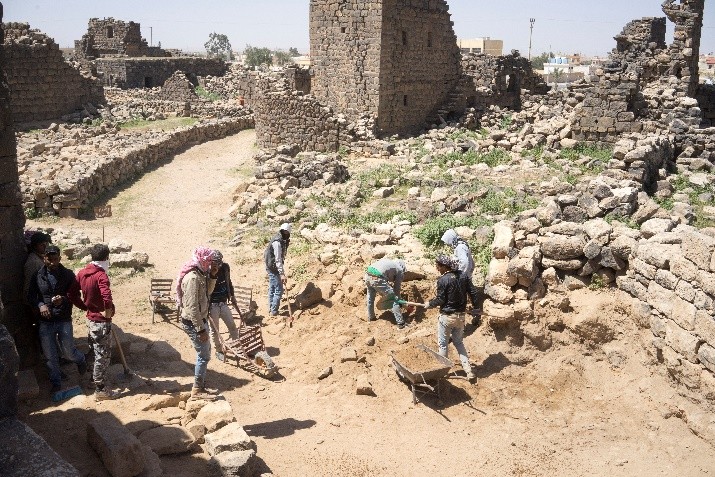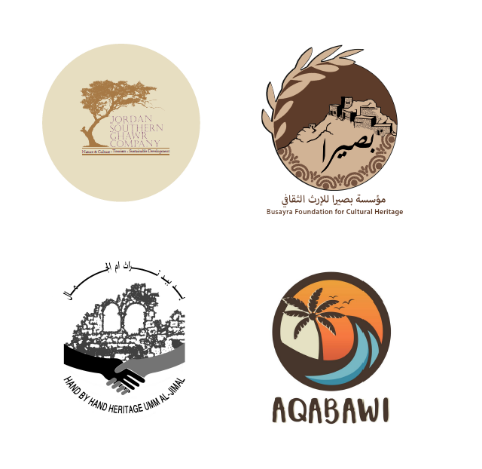Speeches Shim

Background
Tourism continues to be a critical sector for Jordan’s economy, with great potential to boost overall economic growth as well as to drive employment and income generation for the population. With a wealth of historical, archaeological and natural attractions and a functioning tourism infrastructure, Jordan already has the assets to develop a robust and booming tourism sector. Jordan is home to over 25,000 documented archaeological sites, scatterred across the Kingdom. Many sites suffer from poor maintenance and visibility in terms of tourism. In addition, many of these sites are located within communities that are affected by high poverty and unemployment. The restoration and preservation of these sites present a golden opportunity for local economic development and poverty alleviation.
Project overview
USAID’s Sustainable Cultural Heritage Through Engagement of Local Communities Project (SCHEP), implemented by the American Center of Oriental Research (ACOR), aims to achieve effective and sustainable preservation, management and development of Cultural Heritage Resources in Jordan. This is achieved in part through building and strengthening an enabling environment that fosters community engagement, strengthens CHR institutions, and sustains and grows a community of practice. To that end, SCHEP has conducted many site development projects and capacity building programs throughout Jordan, and developed policies, strategies, and procedures to create venues and opportunities for learning, networking, and knowledge-sharing. Jordanian CHR professionals, recent graduates, and members of local communities are offered opportunities to enhance their skills and employability in CHR and tourism fields through Open Learning Environments (OLE) that build upon the experience of SCHEP’s previous training programs and workshops on best practices in CHR management and promotion. These learning opportunities empower local communities and increase skills for employment in related fields. Finally, the economic stability of local communities is also improved through the development of sustainable tourism enterprises and products that will create long-term employment and in turn help enhance experiences, interpretation, branding, and visibility of Jordan’s CHRs.
SCHEP believes that self-reliance is achievable when CHR-mandated entities and community members have the capacity and commitment to act as agents of their own development. With the proper enabling environment and knowledge of best practices, facilitated by SCHEP, CHR-mandated entities can play a significant role in the transition of communities and relevant stakeholders towards self-reliance. Through working closely with partnering CHR entities to provide relevant training and resources, SCHEP will help them achieve this potential and long-term sustainability.
Activities

- Developing Open Learning Environments that provide courses and hands-on training in CHR skills and knowledge to increase the employability of local CHR practitioners, recent graduates, and community members and enhance the ability of local institutions and organizations to manage heritage resources in a sustainable way.
- Building a strong Jordanian Heritage Community of Practice by formalizing connections and synergies between CHR institutions, professionals, universities, and local community members; building local and global capacity for CHR organizations; facilitating strategic planning and implementation; expanding shared online resources; and sharing of skills and knowledge through conferences, workshops, and programs.
- Providing start up grants, capacity building, vocational training, product development, and marketing for sustainable tourism of Jordan’s CHRs, bolstering the economic benefits of tourism for local communities.
IMPACT
- Supported nine CHR sites including Ghawr as-Safi (Karak), Busayra (Tafila), Umm al-Jimal (Mafraq), Bir Madhkur (Wadi Araba), the Temple of the Winged Lions (Petra), Bayt Ra’s (Irbid), Rock Art sites (Wadi Rum), Ayla (Aqaba), and the Archaeological Park Museum (Madaba).
- Increased visits by 57% and decreased threats by 70% through target interventions to improve education, community involvement, and site facilities.
- Engaged host community members in CHR promotion and management. Nearly 136 individuals, including local youth, have received hands-on training in CHR best practices across nine SCHEP sites.
-
Created jobs and improved the type and quality of employment for CHR host communities. Thus far, SCHEP sites have generated 300 employment opportunities in rural areas, including 134 opportunities for those living in poverty pockets or with high refugee populations, with a focus on youth (75%) and female (20%) employment.
- Completion of the Training Diploma in Archaeological Surveying and Cultural Heritage Documentation in cooperation with the Hashemite University, an intensive vocational training program that bolstered capacity for 11 staff members of the Department of Antiquities (DoA) and Petra Archaeological Park (PAP).
- Supported the establishment of 4 CHR-related small enterprises, including the South Valley Company for Sustainable Cultural Heritage and Tourism Development in Ghawr as-Safi, Hand by Hand in Mafraq, Busayra Cultural Heritage Foundation in Tafileh, and Aqabawi in Aqaba.
- Raised awareness for over 6,000 Jordanian youth through a cultural heritage education and engagement program in cooperation with a number of Jordanian governmental and non-governmental organizations.
- Developed professional skills and opportunities for 78 students and young professionals through the SCHEP Internship and Fellowship Program.
- Implemented five separate training courses in CHR related fields that trained 300 individuals in relevant skills, including GIS, site management, MEGA Jordan, Wall Painting Conservation, Cultural Heritage Documentation, and others.

Comment
Make a general inquiry or suggest an improvement.